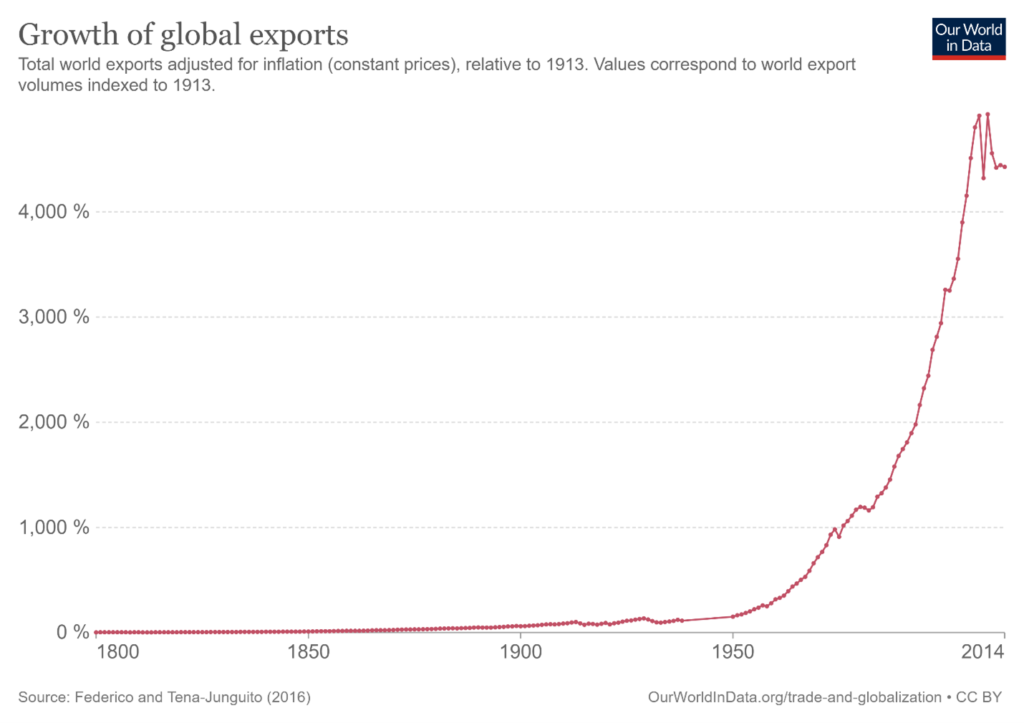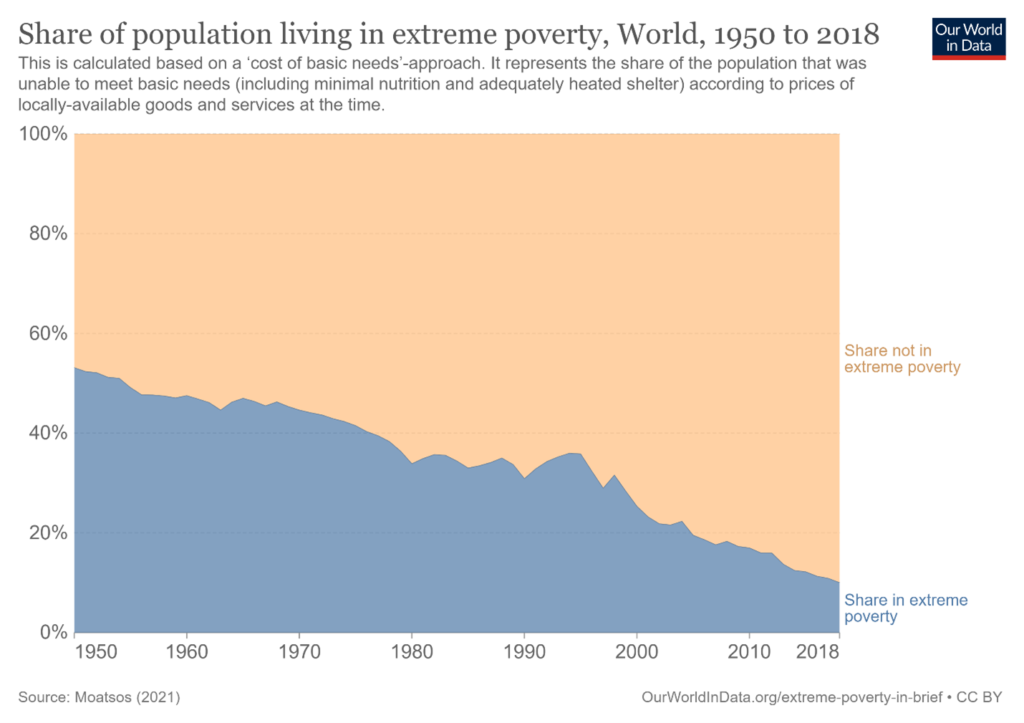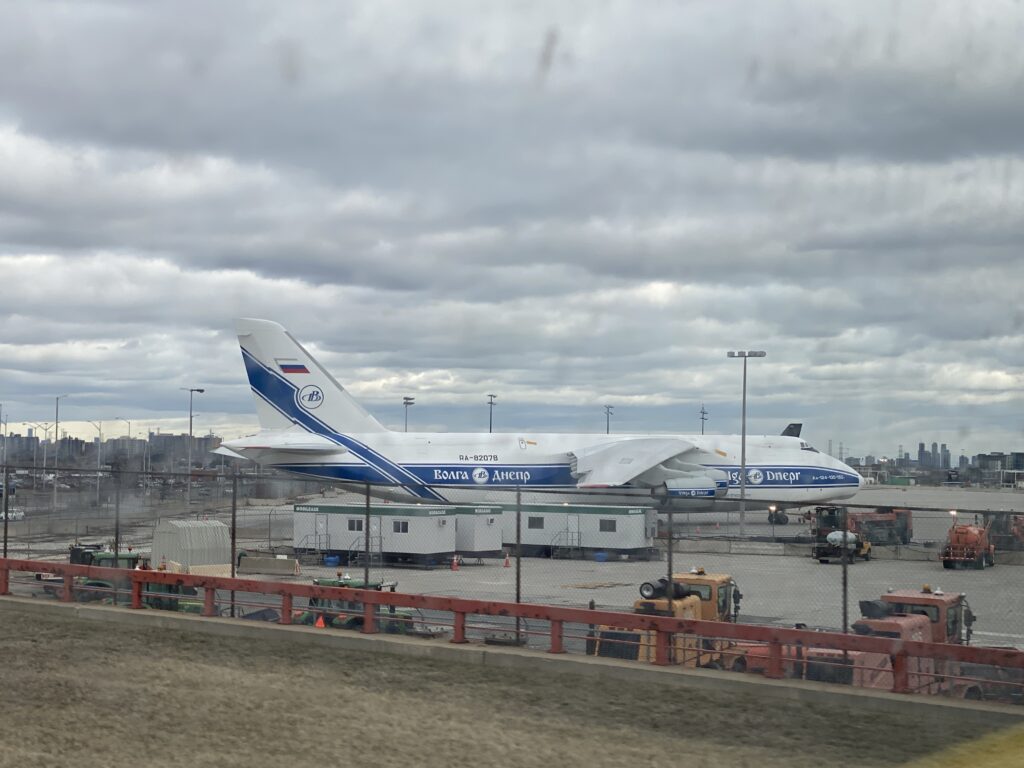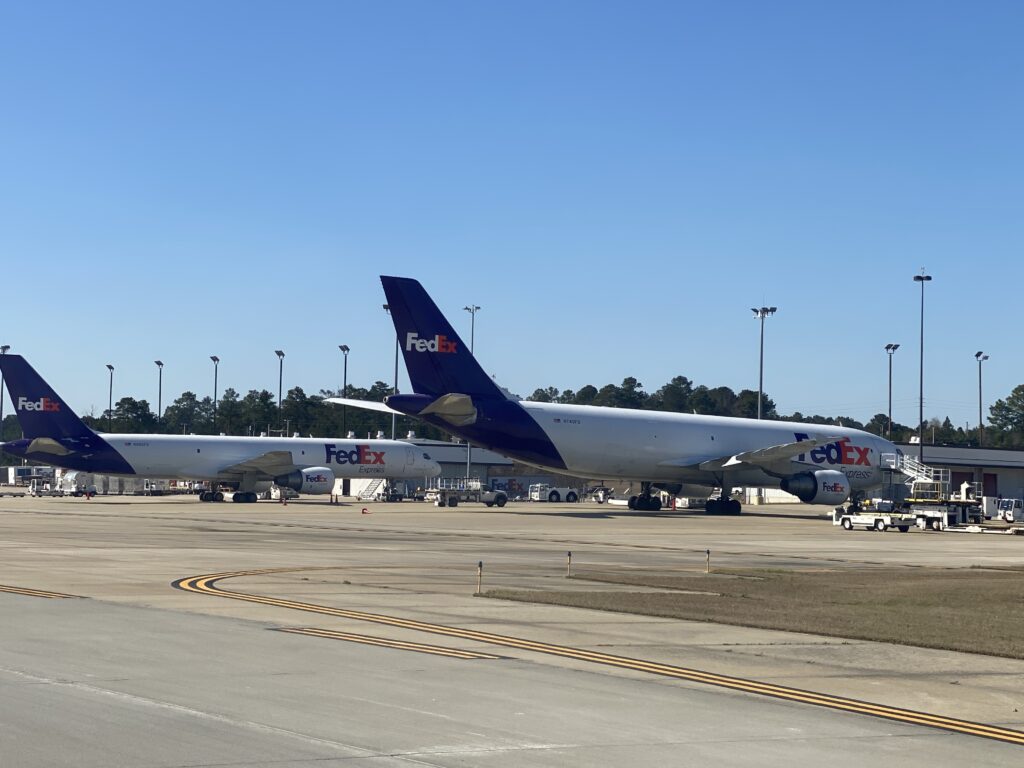By Mark Brooks and Al Robinson
We enjoy the ability to obtain goods and services that are produced from locations all over the globe. We don’t think twice about ordering an item of interest online, to be delivered to our door. Behind that purchase is a complex trade network that is improving our lives, lifting humanity out of poverty and building relationships between people around the world. Decades in the making, Aviation is key to your power to reach out into the global economy. What role does aviation play in the most complex web of commerce in history and what will it mean for the future of your local airport?
Globalization
Globalization is an economic concept. It is defined as the integration of markets, trade, and investments, and includes the removal of barriers that slow the flow of people, products and services between nations. Simply put, a process by which goods and people move without difficulty across borders.
History of Global Trade
A quick look at history tells us that there is nothing new about Global trade. From the silk road to the Caribbean spice trade, the history of commerce is intertwined with the development of human civilization. But these early forms of global trade networks lacked expeditious, safe and secure routes and passages. There was always a risk of theft, kleptocracy and out right piracy which made trade incredibly expensive. From trading with a village just down the road to a city located on the other side of the globe, the tyranny of geography ruled all. The greater the distance, the greater the risk. So global trade was limited to high value exotic items that were worth the wait and risk.
Until modern times, Global trade was usually isolated within specific empires constructed around seaports. For hundreds of years the Dutch, English, French, Spanish, and others, all based their commerce on overseas colonies. Occasionally, these trade networks attempted to trade with one another with mixed results. They would steal from each other during times of war which was often sparked by competition for resources. The lack of cooperation enabled pirates (or rival nations pretending to be pirates) to roam the Caribbean and other seas, plundering merchant vessels and even the ports themselves.
For centuries, clashing colonial powers would make foreign trade unreliable. The end of the second world war saw the establishment of the United Nations and by 1945 there would be only two global power blocks, each with their own sphere of influence and ideology. The Western Democracies organized around the NATO (North Atlantic Treaty Organization) and associated alliances, and the Soviet bloc dominated by the USSR.
Unlike the Soviets, the Western Democracies had emerged as the dominant naval and global trade power. While the Soviets would hold eastern Europe and central Asia, the West dominated the oceans of the world. It used this dominance to transform post war trade into a secure global network. A single global capitalist economy, with international trade, banking and regulatory organizations was born. To help disadvantaged nations, the IMF (International Monetary Fund) was created.
Safe shipping lanes and common rules were developed and may have created cost competitive commerce worldwide, but it took aviation to super charge it into a global economy. Starting in the 1950s, skilled workers, entrepreneurs, capitalists and investors could travel across continents in a single day instead of weeks or months. Business deals that once took years happened in days. All you needed were two airports and an aircraft able to reliable connect them. From 1950 to today, global trade skyrocketed.

Reduction of Extreme Poverty
If you are using an electronic device to read this, it contains various components that were sourced from faraway places and flew several times around the world before reaching your hand. If you are using an iPhone, for example, it is made up of parts from over 200 individual suppliers that crisscrossed the globe by sea and air.
Modern airports are ports of trade for 1/3 of all global economic activity by value. Airports are the points of access and a lynchpin of a global economy unprecedented in human history. An economic system that in scant decades has lifted billions of people out of extreme poverty.
Globalization has improved the quality of life for more people than any other single event in history. In 1950, 53% of people worldwide were living in extreme poverty. With the improvements in aviation and construction of modern airports, people around the world began to have easier access to state-of-the-art technology, industrial equipment, consumer goods, medicine, expertise, education, and training at an affordable cost. In 70 years, this has greatly reduced the number of people living in extreme poverty and by 2018 extreme poverty worldwide was reduced to 10%.
Globalization has lifted billions of people out of extreme poverty by enabling goods created by their labour to be sold competitively anywhere in the world. If a disaster occurred, a family starving in Africa could be fed with food airlifted from Canada in 24 hours. All you needed was to be close to an airport. No other economic event has done more for the extreme poor than the globalization of trade enabled by aviation.

Everyone could participate in this new, global trade network if they so choose but it came at a cost. The burden of providing global security on the seas and in the air to keep the airways and shipping lanes safe is paid mostly by the western democracies and their allies. There was only one catch to participate in this global trade network, you needed to support and adhere to a new set of rules with a firmly pro-trade, free market, democratic and capitalist orientation. A geopolitical mandate was structured around the UN (United Nations) and enforced by member states through UN organizations like ICAO (International Civil Aviation Organization).
The days of cargo ships being stolen by rival nations or pirates, or aircraft banned from overflying most of the world’s airspace, was over. If your country lacked natural resources or food, it could now be easily imported, all you needed was money. No money yet, you could borrow it from structures policed by the IMF. Nation states no longer needed to sell out its culture to a European colonial master or adhere to Soviet style revolutionary dogma. This free trade network eventually opened up to communist China in 1979. The golden age of globalism arrived on the wings of jet set trade and diplomacy.
Don’t want to follow the rules of international trade and its capitalist, western oriented ideas or institutions? A nation state can always opt out to some degree, even completely. Ask North Korea how well that is going. If you break the rules by going against the UN charter (like invading your neighbor), sponsor terror organization or undertake gross violations of the UN charter on human rights, you can be blocked from accessing some or all the global economy. Recent examples include Russia and Iran now under extensive sanctions limiting their ability to trade (buy and sell goods) with other nations.

The advantages of a global economy are extraordinary, especially for smaller (population sized) nations like Canada. It enables our local Industries the opportunity to go global. Local producers and traders can sell their goods and services into an international market and attract investment capital from around the world. This enables a scale of research, development, and production 100 times larger than the Canadian market could support. New advanced industries now create higher quality jobs and technologically advanced products at a lower price. Thanks to these opportunities, Canada has become a trading powerhouse with a GDP (Gross Domestic Product) larger than Russia.
But this complex web of commerce, international rules and free trade came at a price to many in the middle class in the developed world. Once thriving industries became uncompetitive and shutdown. This created a “rust belt” in parts of America, Canada, and Europe. In the 1960s, a worker in Ontario with basic education could earn a good living performing manual labor on an assembly line. The worker could afford a house, a car, and to support a family all on a single salary. Today that same worker is hard pressed just to support himself and the dream of owning a home is out of reach for many, if not most. The world is moving faster and faster and some just want to get off.
This provides fertile ground for influence operations by autocratic governments, kleptocratic dictators, those politically opposed to free market capitalism, ethnic nationalists and religious extremists. As isolationists once hated seaports, the anti-globalization movement, born out of the rust belt, hates airports. Air travel is portrayed as the sin of the elites rather than the lynchpin of the most successful mass transit system in history.
As prosperity and industrialization spread across the world, so has the use of fossil fuels and a new threat, global warming. Carbon emissions from aviation is being weaponized into a new boogeyman by those wanting to reverse the dominance of global capitalism. This is despite the facts that aviation accounts for only 3% of worlds carbon emissions and is expected to reach net zero emissions worldwide by 2050.
The fact is that aircraft are often the safest, fastest, most carbon emission efficient method to move people and high value goods long distances in most parts of the world, especially in Canada. An Airbus A220, assembled at the Mirabel airport near Montreal, from parts made all over the world, is already achieving 2.2 litres per 100km per passenger seat. The airbus can fly straight as an arrow between airports. Compare this to the average 9.0 litres per 100 km fuel consumption of a new sedan. Also consider that a car must follow the contours of an asphalt highway eating up farmland and forests. A highway infrastructure that requires constant emissions producing road repairs and snow removal.
New aircraft like the A220 showcase aviation’s ability to improve fuel economy, reducing both costs and emissions. Soon the use of net zero carbon fuel, mandated by ICAO, will be commonplace. ICAO is predicting that all airports and aircraft will produce net zero emissions by 2050 while doubling the number of international flights.

Despite the advantages, some people fear the global economy and its effects on their job security. Others fear the loss of political ideals that do not align with capitalism and free trade. To a radical few, an airport is even considered an evil portal inhabited by planet heating demons that must be closed at any cost.
Most of us want the freedom to travel, the economic benefits and easy access to an airport but fear noise pollution or wonder about safety. Careful planning of new aviation infrastructure, such as the new Pickering Airport near Toronto, is minimizing these concerns. This new airport will be an economic engine creating thousands of local jobs by connecting our economy and citizens to a world full of opportunities.
Love it or hate it, the economic importance of a local accessible airport is expected to grow in the decades ahead. Barring a radical upset by anti-global politics or a revival of cold war style trading blocs (looking at Russia, China, and Iran), the global economy is here to stay, and airports are key to its success.
Airports enable the fast safe movement of people and goods that is lifting humanity into a bright, clean and prosperous future full of wonder. All you need to travel and trade with the world is local access to a runway. Like it or not, humanity is flying into the future together.
they really need to decide on these lands. make a decision – either build an airport or don’t. they have put the city and the region in limbo for 51 years – not just the Airport lands themselves but a large radius around them.